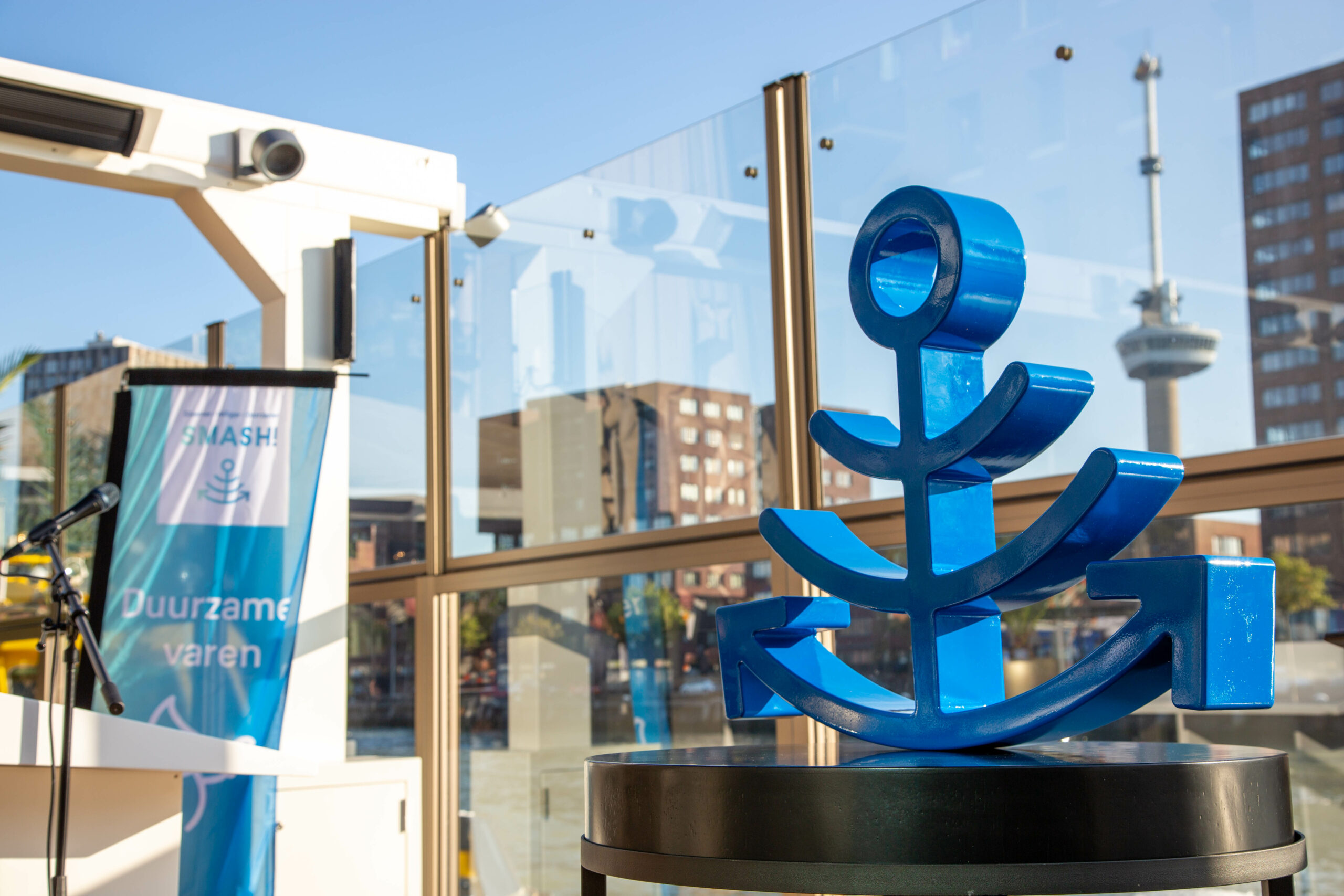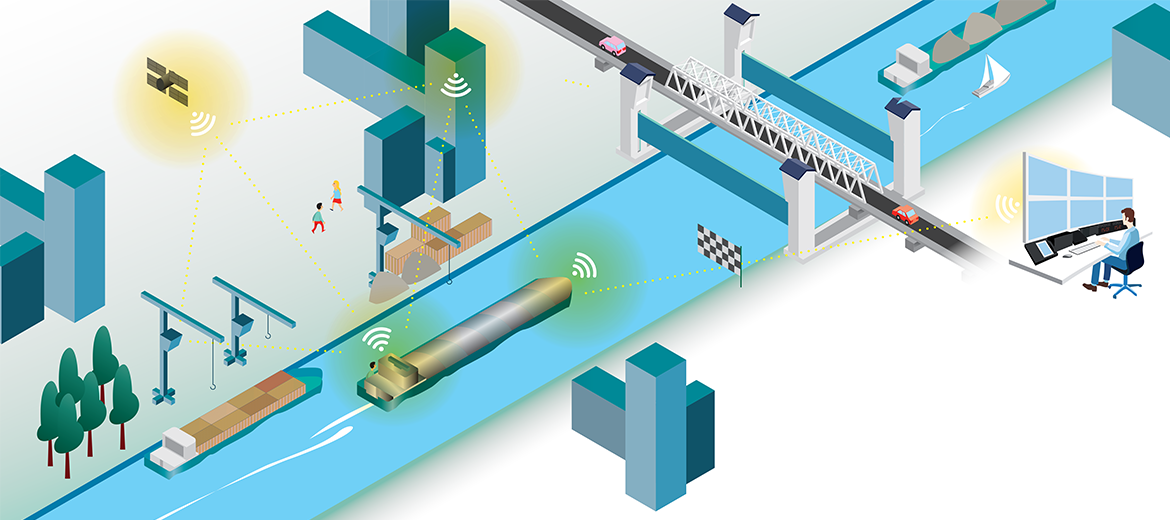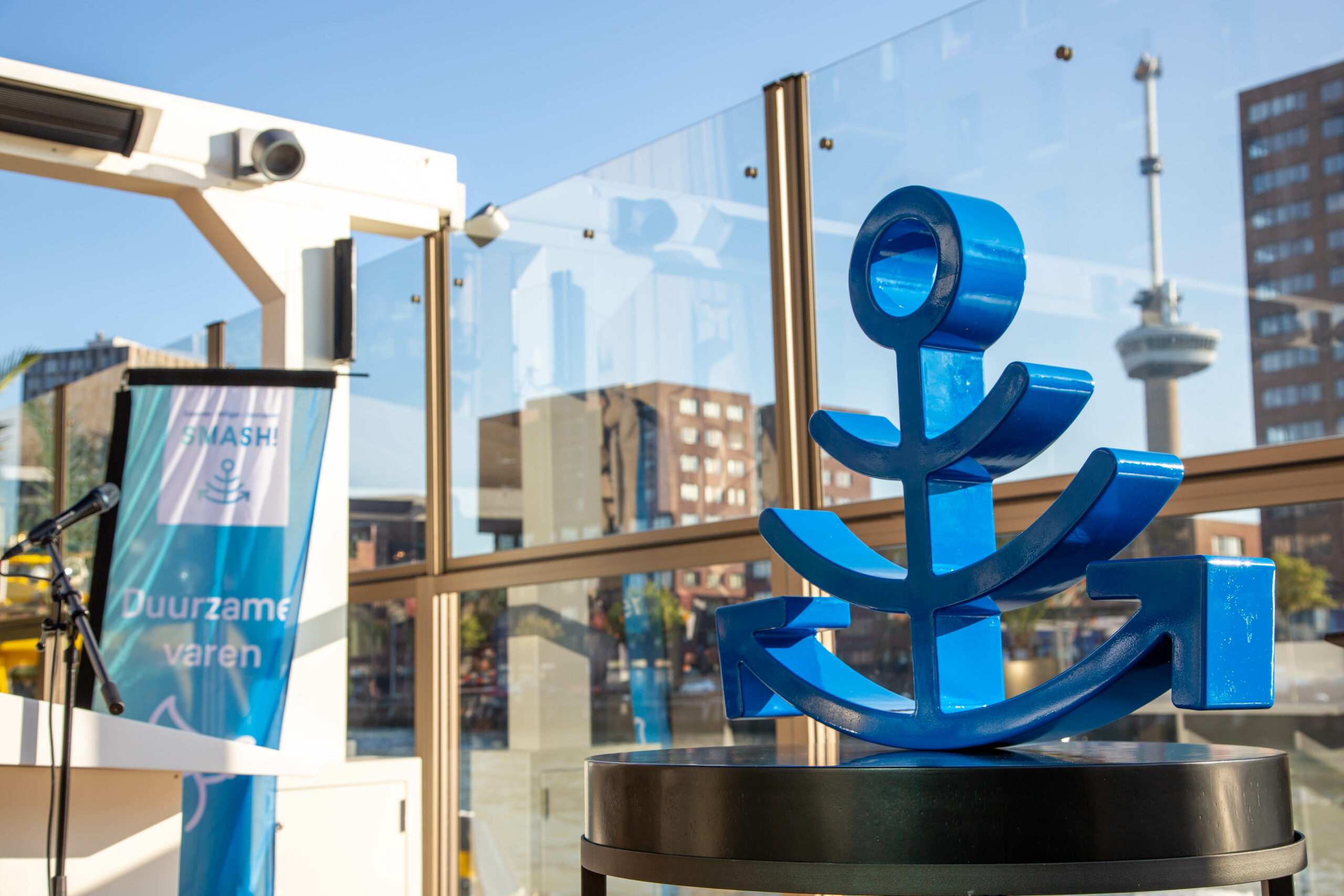CCNR’s vision to support the harmonised development of automated navigation
The Mannheim Declaration calls on the CCNR “to press ahead with development of digitalisation, automation and other modern technologies, thereby contributing to the competitiveness, safety and sustainability of inland navigation”. The CCNR is responding to this call and, as it has done with other innovations, is keen to place Rhine navigation at the forefront of the harmonised development of automated navigation, not least through its close cooperation with the shipping industry, while bearing in mind that the development of automated navigation is not an end in itself.
Automation implies a fundamental change for inland navigation and will affect almost all aspects of inland navigation. The CCNR therefore takes a global approach, taking account of legal, ethical and social aspects. Automated navigation is indeed a challenge, as it involves the safe coexistence of automated vessels and “conventional” vessels. Furthermore, this automated navigation will have to be integrated into the existing context of Rhine navigation. Similarly, automated navigation will have to be adapted to the existing physical infrastructure, which is likely to require the provision of additional information.
As a first step in fostering this development, the CCNR will create a framework for the authorisation of pilot projects which require temporary derogations from CCNR regulations. The aim of these pilot projects is to gather experience and to take this into account in future work on adapting the CCNR regulations. The CCNR also hopes that the procedure developed for authorising such projects will inspire its member states to examine projects on their national waterways or transnational projects and thus contribute to harmonisation on an international scale.
In order to face the specific challenges posed by automated navigation, the CCNR has revived its Small Navigation Committee (RN), originally established to tackle and coordinate innovative and cross-sectoral developments in Rhine navigation. The Small Navigation Committee will process applications for approval of pilot projects and, in close collaboration with the other committees concerned, will direct and coordinate all work related to automated navigation.
Given the cross-sectoral nature of automation, the CCNR considers it necessary to develop simultaneously the requirements for the operation of vessels, the training of personnel and the composition of crews, as well as the technical requirements for vessels and those relating to information technology and liability. To this end, the CCNR will update its own regulations (RPNR, RVBR, RPN) and also propose to the European Committee for drawing up Standards in the field of Inland Navigation (CESNI) the development of any standards it deems necessary to ensure the safety of navigation and to allow the harmonisation of regulations on a European scale. The CCNR has already made a start on the work required, in the knowledge that regulations to ensure the safety of navigation will also contribute to greater legal certainty for investments.
During its plenary session in December 2018, the CCNR adopted the first international definition of the various levels of automation in inland navigation. The CCNR believes that this definition will need to be amended to take account of new developments, and a revision of the definition is already planned.
These different levels of automation offer a good starting point for the prioritisation of work. In the short term, the CCNR considers it necessary to work on minimum requirements and/or recommendations for inland navigation guidance aids corresponding to level 2 of the definition (automated navigation system for both steering and propulsion). In parallel with the automation itself, the CCNR also intends to work on the conditions for operating an automated vessel from a central facility for the remote control and monitoring of vessels. In the medium term, work could start on systems that fall under level 3 of the definition.
With this in mind, the CCNR has drawn up this vision as an instrument for directing and coordinating the work to be carried out in the period 2022 to 2028 and beyond.



